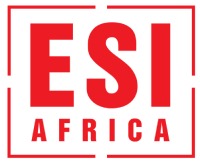Africa: Uptick in energy access but finance shortfall persists
Meeting the rising energy demands in Africa will require a major expansion of generation and transmission infrastructure, says a new IEA report
Securing sufficient investment to expand domestic energy provision remains one of Africa’s biggest challenges. The International Energy Agency’s (IEA) World Energy Outlook 2025 report released today (12 November) juxtaposes funding challenges with rising momentum in energy access and the continent’s untapped potential in critical mineral processing.
After a decade of declining finance for export-oriented oil and gas projects, investment across Africa’s domestic energy infrastructure – especially in the power sector – has rebounded since 2021.
Total energy investment is projected to return to 2015 levels by 2035 under the IEA’s Stated Policies Scenario (STEPS). However, even this recovery remains insufficient to meet basic energy needs across the continent.
Accelerating energy access in Africa
The IEA report notes that modern energy access efforts are regaining traction, with most countries that still face access deficits having introduced new policies since 2024.
The number of Africans gaining access to clean cooking is expected to reach 24 million people per year by 2035, while access to electricity expands to 20 million people annually – a 25% improvement compared with the 2010s.
Liquefied petroleum gas (LPG) will play the leading role in extending clean cooking access, with demand set to rise by 150,000 barrels per day by 2035.
Meeting Africa’s rising electricity demand will require a major expansion of generation and transmission infrastructure. The continent is projected to add 24GW of new power capacity annually to 2035 – double the rate of the past decade – with more than 70% of additions coming from renewables.
Solar PV will account for half of all new capacity, driven by lower technology costs and a surge in imports from Chinese manufacturers. By 2035, solar power is expected to overtake hydropower as Africa’s second-largest electricity source.
Natural gas remains the mainstay of Africa’s generation mix, helping to stabilise grids amid hydropower shortages. Coal continues to contribute to electricity supply, while nuclear power development gains momentum.
Egypt’s El-Dabaa plant, North Africa’s first nuclear facility, is expected to reach full capacity by 2030. Grid networks are also expanding rapidly, with 190,000km of new lines added each year to 2035 – a 40% increase over current levels.
Oil, gas and the rise of critical minerals
Africa’s oil and gas investment outlook is also improving. Production across major exporters such as Nigeria, Libya and Algeria is projected to remain broadly stable, while new entrants including Uganda, Senegal and Namibia will lift output in the 2030s.
By 2035, the continent will account for 7% to 8% of global oil supply, while natural gas production will rise from 240 billion cubic metres in 2024 to around 260 bcm. Mozambique will drive much of this growth, doubling its LNG output to more than 20 bcm.
Beyond hydrocarbons, the IEA highlights Africa’s unmatched mineral wealth – home to 80% of global platinum-group metal reserves, more than half of cobalt and chromium, and at least a quarter of global manganese, bauxite and graphite deposits. These resources are vital for clean energy technologies, yet most are exported in raw or semi-processed form.
Several countries are beginning to act. Zimbabwe tightened lithium export controls in 2023, and Gabon plans to ban raw manganese exports from 2029.
However, the IEA cautions that such measures’ success depends on national market conditions and the capacity to develop local processing industries.
The report estimates that if African nations expand refining capacity for key minerals such as copper, cobalt, nickel, graphite, manganese and phosphate, the total market value of these minerals could grow from $70 billion in 2024 to $120bn by 2040.
Refining copper and nickel domestically could increase local market value by up to 10%, while refined phosphate alone could add $39bn.
The IEA says such progress could trigger a “virtuous cycle of industrialisation,” creating skilled jobs, boosting export earnings and stimulating local energy infrastructure investment.
Global context and energy security
The World Energy Outlook 2025 places Africa’s developments within a wider global energy security context, with IEA Executive Director Fatih Birol warning that “no other time in recent decades” has seen energy security pressures across such a broad range of fuels and technologies.
Electricity is now central to modern economies, accounting for 20% of global final energy consumption but powering sectors that make up 40% of the world economy. Investment in electricity and electrification already represents half of global energy spending.
Birol noted that global investment in data centres – estimated at $580bn in 2025 – has now surpassed spending on oil supply, signalling a structural shift in energy demand patterns.
With renewables leading global growth and nuclear power regaining prominence, the IEA says that while the world faces rising climate and security risks, Africa’s accelerating energy investments and mineral ambitions position it as a critical player in shaping the future global energy landscape.
Cover photo: This generic picture shows workers at an electricity pylon



